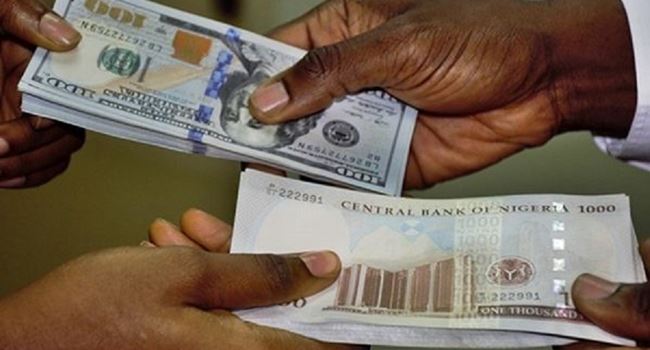•Why naira should trade below N1,000/$ — Expert
Reduction of the spread between parallel and official market exchange rates, growing external buffers, increased foreign exchange (FX) flows and prospect of increased oil production have been identified by an economy expert and CEO of The CFG Advisory, Mr. Adetilewa Adebajo, as reasons why the Nigerian naira should trade below N1,000 to the US dollar.
Adebajo, in a chat with the Nigerian Tribune, observed that with a new transparent FX management in place, driven by a Bloomberg bid and offer platform, the spread between the parallel markets and official markets has reduced from over 50 percent in 2022 to under 5 percent in 2025.
He further explained that FX flows have increased, stressing that as of January 2024 to date, FX inflows have consistently outpaced FX outflows.
In 2025, average monthly FX turnovers increased to US$8.1 billion compared to US$5.5 billion in 2024.
Read Also: Oladoja vows to revamp NANS
Nigeria’s external reserves went up from US$30 billion in March 2024 to US$40 billion by September 2024. External reserves have stabilized at US$38 billion by Q1 2025. The net reserve position has also made an impressive fivefold recovery from a low of US$4 billion in 2023 to US$23.1 billion by year end 2024.
Similarly, Adebajo said the new NNPC boss had made drilling re-entry a priority. “This is a common practice in mature oil fields to optimize production and reduce costs,” he added.
According to NUPRC, the rig count has gone up from 18 to 38 in the past year and is expected to hit 50 by year end. The urgency to audit, reconcile and determine the true position of the forward oil sales contracts has become apparent, the expert suggested.
According to him, Nigeria’s imports in 2024 were US$43 billion, and given the average monthly turnover for the FX market, he said the country can expect the market has capacity to generate between US$97–100 billion annually.
His words: “Deducting imports values from the past five years, shows the current annual market FX turnover will cover imports and leave room for about US$40–50 billion for invisibles and other informal requirements for FX in the market.”
WATCH TOP VIDEOS FROM NIGERIAN TRIBUNE TV
- Let’s Talk About SELF-AWARENESS
- Is Your Confidence Mistaken for Pride? Let’s talk about it
- Is Etiquette About Perfection…Or Just Not Being Rude?
- Top Psychologist Reveal 3 Signs You’re Struggling With Imposter Syndrome
- Do You Pick Up Work-Related Calls at Midnight or Never? Let’s Talk About Boundaries






